When we think about bathrooms, we often picture the toilet seat, tank, flush handle, or even the pipes that carry water in and out. Yet there is one small but powerful piece of plumbing that holds the system together: the toilet flange.
So, what is a toilet flange? It is a circular plumbing fitting, usually made of metal or plastic, that connects the toilet bowl to the drainpipe in your bathroom floor. Its job is twofold: it anchors the toilet securely to the floor and provides a sealed pathway for waste to flow into the drainage system without leaking or releasing foul odors.
A flange might look like a simple ring, but without it, your toilet cannot function properly. Installing a toilet without a flange would lead to constant leaks, wobbling, and even damage to the bathroom floor. Because of its importance, flanges are manufactured in a variety of materials such as PVC, stainless steel, cast iron, and brass to suit different needs and budgets.
In modern bathrooms, the toilet flange is one of those hidden essentials that homeowners rarely think about—until something goes wrong. By understanding what is a toilet flange, the types available, and how it works, you can make better choices when repairing, upgrading, or even building a new bathroom.
| Types of Toilet Flange | Durability | Chemical Composition |
| Cast Iron: | High | Pig/ore iron |
| PVC: | Low | Polyvinyl Chloride |
| Stainless Steel: | High | 11%+ chromium and SAE 304 stainless steel |
| Aluminum: | Medium | Aluminum, copper, zinc, and magnesium |
| Copper: | High | Copper-63 and copper-65 |
| Brass Metal: | High | Copper and zinc |
Types of Toilet Flanges and Their Characteristics
Once you understand what is a toilet flange, the next step is to explore the different materials and designs available. Not every flange is built the same, and choosing the right one can affect durability, ease of installation, and long-term performance. Below are the most common types of toilet flanges, along with their features, advantages, and drawbacks.
1. Stainless Steel Toilet Flanges
Stainless steel is often considered the premium choice for modern bathrooms. These flanges are lightweight, highly durable, and completely resistant to rust and corrosion. Compared to plastic flanges, stainless steel provides superior sealing and long-lasting stability. Although they are more expensive, their decades-long performance makes them worth the investment.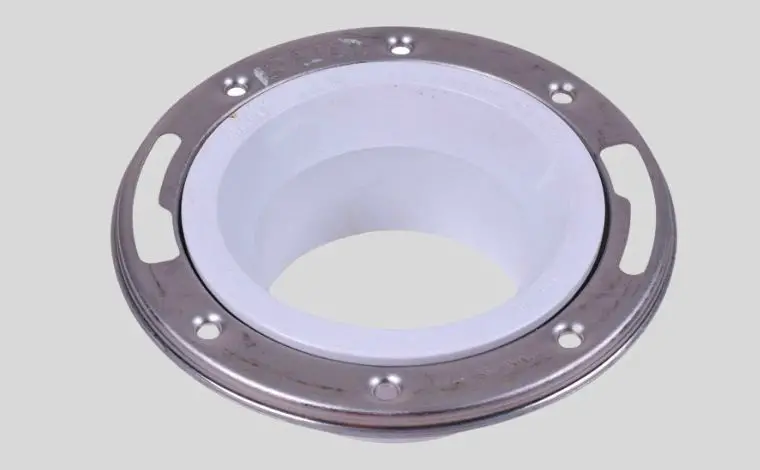
2. Cast Iron Toilet Flanges
Cast iron flanges are strong and heavy, designed to fit securely with cast iron drainpipes. They are particularly useful in older homes where cast iron plumbing is still common. One drawback, however, is their tendency to rust over time. Still, when properly installed and maintained, cast iron flanges provide a reliable and sturdy connection between the toilet and drain.
3. PVC (Plastic) Toilet Flanges
PVC flanges are the most popular option in residential bathrooms today. They are inexpensive, lightweight, and easy to install, making them ideal for DIY projects. Standard PVC flanges typically measure 4 × 3 inches, but larger versions with extension kits are also available for elongated toilets. To increase durability, many modern PVC flanges come reinforced with stainless steel rings, preventing cracking and extending lifespan.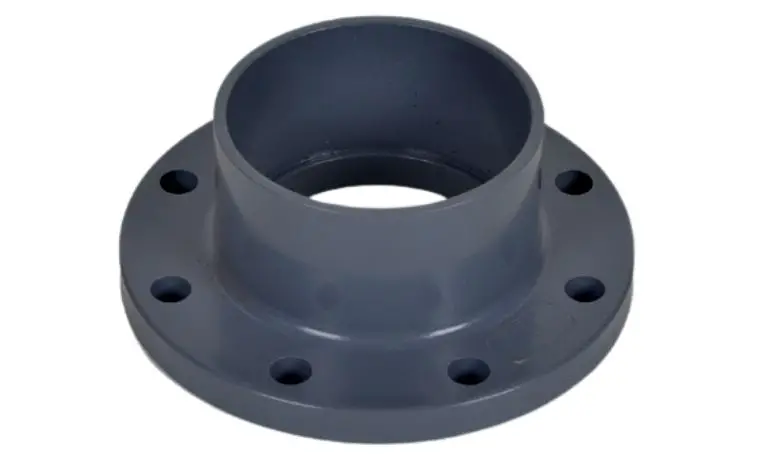
4. Aluminum Toilet Flanges
Aluminum flanges are corrosion-resistant, lightweight, and relatively affordable. They are available in pure or composite form, with composite models often blended with copper, zinc, or manganese. While pure aluminum flanges perform well over time, composite types may lose effectiveness more quickly. They are a good middle-ground choice, though not as strong as copper or stainless steel.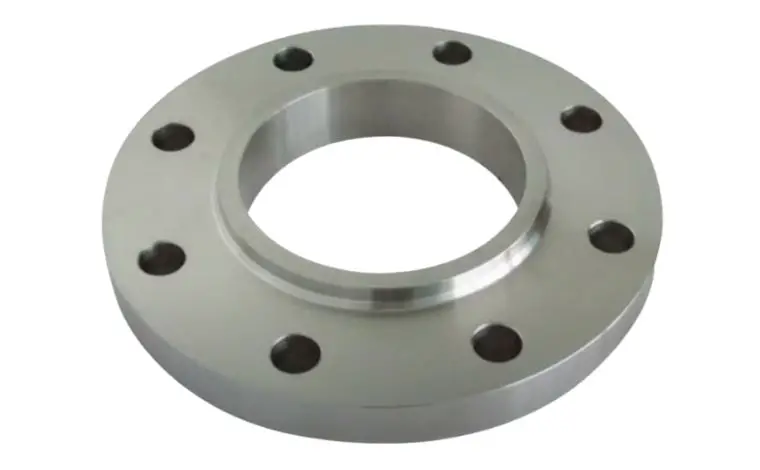
5. Copper Toilet Flanges
Copper flanges are known for their natural antifungal and antibacterial qualities, making them a hygienic choice for bathrooms. They are also corrosion-resistant and very durable. Although copper flanges are more costly, they offer long-term reliability and extra protection against bacteria, which makes them a premium option for health-conscious homeowners.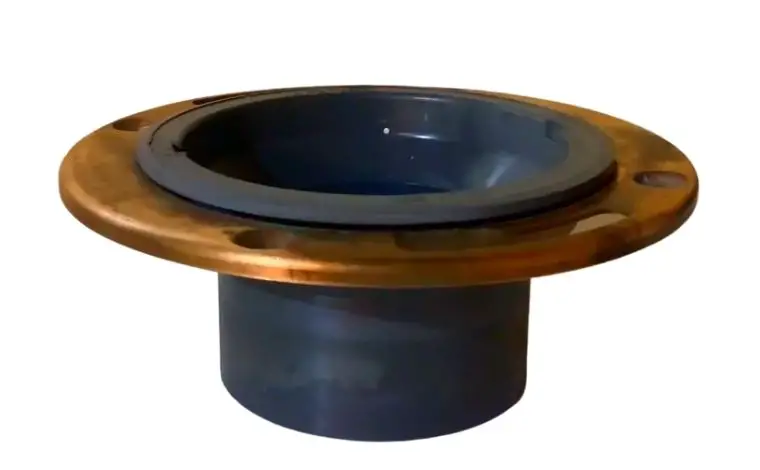
6. Brass Toilet Flanges
Brass was once one of the most popular flange materials. Strong and reliable, brass flanges were commonly used in older bathrooms. Today, however, they are less common due to better alternatives like stainless steel and reinforced PVC. Brass flanges may also rust after extended use, though their durability still makes them a solid option in some cases.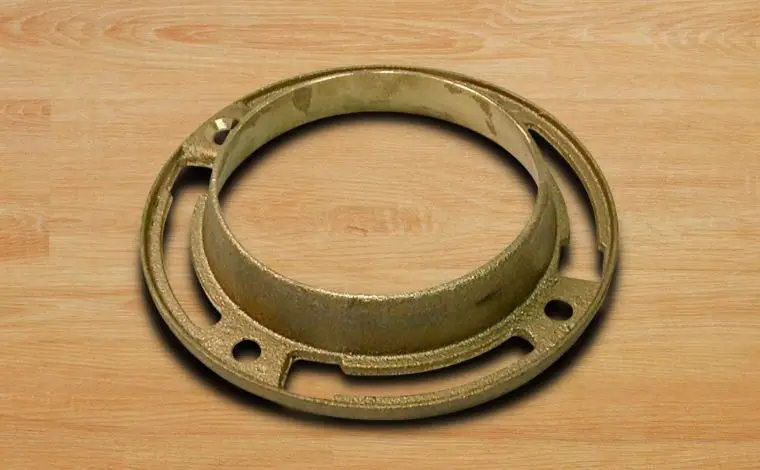
Standard and Non-Standard Sizes of Toilet Flanges
Now that we’ve answered what is a toilet flange and explored its types, the next important factor to consider is size. A toilet flange must fit both the toilet and the drainpipe perfectly. If the size is even slightly off, you may face issues such as leaks, poor flushing, or a wobbly toilet.
Standard Toilet Flange Sizes
-
4 × 3 Inch Toilet Flange
- Description: This is the most common flange size found in modern bathrooms. The top diameter is 4 inches wide, designed to connect to the toilet base, while the bottom diameter is 3 inches, which fits into the drainpipe.
- Advantages: The wider top provides a better seal and extra cleaning space for waste to pass, reducing the chances of backflow through the wax ring. It’s also widely available in hardware stores, making it the go-to choice for most installations.
-
3 Inch Toilet Flange
- Description: Unlike the 4 × 3 flange, both the top and bottom diameters are 3 inches. This size works best with narrower drainpipes, often found in older homes or smaller bathroom setups.
- Advantages: Offers a snug fit for 3-inch pipes and ensures smooth waste flow when matched properly.
- Limitations: Less common in stores compared to 4 × 3 flanges and may not handle water pressure as efficiently because of the smaller opening.
Non-Standard Toilet Flange Sizes
Not all homes are equipped with standard plumbing. In older properties or bathrooms with unique pipe materials, standard flanges may not fit. That’s where non-standard or specialty flanges come in.
- Adjustable Flanges: Designed to adapt to unusual drainpipe diameters.
- Oversized or Undersized Flanges: Used when the existing pipe doesn’t match standard dimensions.
- Offset Flanges: A special category of non-standard flanges that allows you to reposition the toilet slightly (usually by 2 inches) without moving the drainpipe—ideal for tight spaces or remodels.
How to Install a Toilet Flange
Knowing what is a toilet flange is only the first step. To keep your bathroom clean, odor-free, and leak-proof, it’s equally important to install the flange correctly. Although many homeowners hire a plumber, installing or replacing a toilet flange can be a manageable DIY project if you follow the right steps carefully.
Tools and Materials You’ll Need
- New toilet flange (correct size and material)
- Wax ring or wax-free seal (modern alternative)
- Flange bolts and nuts
- Screwdriver or drill
- Putty knife (for removing old wax)
- Adjustable wrench
- Level (to ensure proper alignment)
- Silicone sealant (optional, for added protection)
Step-by-Step Installation Process
Step 1: Shut Off the Water and Remove the Toilet
Turn off the water supply valve behind the toilet. Flush to empty the tank and bowl, then disconnect the water line. Carefully lift the toilet off the floor and set it aside on a towel or cardboard.
Step 2: Clean the Area
Scrape away the old wax ring from the flange and toilet base using a putty knife. Ensure the drainpipe opening is clear of debris.
Step 3: Check Flange Position
The flange should sit flush with the finished bathroom floor. If it’s too low, use a flange extender or spacer. If it’s too high, it may need to be reset lower into the subfloor.
Step 4: Place the New Flange
Insert the flange into the drainpipe, ensuring the bolt slots align with the toilet’s mounting holes. For PVC flanges, solvent cement may be used to secure it in place. For metal flanges, tightening screws directly into the floor provides stability.
Step 5: Install the Wax Ring
Place a fresh wax ring (or wax-free rubber seal) over the flange opening. The wax provides an airtight, watertight seal between the toilet and flange.
Step 6: Reset the Toilet
Carefully lower the toilet bowl over the flange so the bolts pass through the toilet’s holes. Press down evenly to compress the wax ring and form a proper seal.
Step 7: Secure the Toilet
Tighten the nuts onto the bolts with a wrench, but avoid over-tightening as this may crack the porcelain. Reconnect the water supply line.
Step 8: Test for Leaks
Turn on the water, flush the toilet several times, and check around the base for leaks. If water seeps out, the flange may not be sealed correctly and the process will need adjustment.
Common Toilet Flange Problems and Solutions
Even if you understand what is a toilet flange and install it correctly, problems can still arise over time. A flange is exposed to water, pressure, and daily use, so recognizing issues early and knowing how to fix them can save you from costly repairs.
1. Leaking Toilet Base
-
Cause: The most common reason for leaks is a damaged or improperly seated wax ring. Sometimes, an uneven floor or loose bolts can also break the seal.
-
Solution: Replace the wax ring or upgrade to a wax-free seal. Ensure the toilet sits level and the bolts are tightened evenly.
2. Cracked or Broken Flange
-
Cause: Overtightened bolts, corrosion (especially in cast iron or brass flanges), or accidental impact.
-
Solution: Use a flange repair ring or repair kit if the damage is minor. For severe cracks, replacing the flange entirely is the safest option.
3. Flange Too Low or Too High
-
Cause: Changes in flooring height (for example, after adding tile or vinyl). A flange below floor level leads to poor sealing, while a flange above floor level prevents the toilet from sitting properly.
-
Solution: Install flange extenders or spacers to adjust the height so the flange sits flush with the finished floor.
4. Rust and Corrosion
-
Cause: Common in older cast iron or brass flanges exposed to moisture over many years.
-
Solution: Replace with PVC flanges reinforced with stainless steel rings, which are resistant to rust and much easier to maintain.
5. Loose or Wobbly Toilet
-
Cause: A flange that isn’t anchored securely to the subfloor or has worn-out bolts.
-
Solution: Tighten or replace the bolts. If the flange is broken, use a repair ring to strengthen it.
Conclusion – Why Understanding What is a Toilet Flange Matters
By now, you should have a clear understanding of what is a toilet flange and why this small plumbing part is such a vital piece of your bathroom setup. It doesn’t just connect the toilet to the drainage system — it ensures proper waste removal, prevents foul odors from escaping, and keeps your toilet firmly anchored to the floor. Without a flange, even the most expensive toilet would fail to function correctly.
We’ve seen that toilet flanges come in many materials — stainless steel, PVC, cast iron, aluminum, copper, and brass — each with its strengths and weaknesses. Hybrid models, such as PVC reinforced with stainless steel, have become increasingly popular in 2025 because they balance affordability with long-term durability. Equally important are the flange sizes, with standard 4 × 3-inch and 3-inch options serving most modern bathrooms, while specialty or adjustable flanges handle unique situations.
Knowing what is a toilet flange also helps when tackling common problems. From leaks at the toilet base to broken flanges and corrosion, many issues can be solved with modern repair kits, wax-free seals, and flange extenders. These advancements mean homeowners no longer need to rip up floors or call a plumber for every small repair.
In short, the toilet flange is the unsung hero of your bathroom. It may not be visible, but it directly impacts hygiene, comfort, and functionality. Whether you are renovating, repairing, or simply curious about bathroom plumbing, understanding what is a toilet flange gives you the knowledge to make smart, long-lasting choices.
So, the next time you think about bathroom upgrades, remember: a toilet may catch your eye, but the flange beneath it is what ensures everything runs smoothly. Investing in the right flange means investing in peace of mind for years to come.
Hi, this is Robert Crossan, the owner of this website, has 17 years of experience in the installation, maintenance, and repair of toilets and plumbing systems. After completing the Level 2 Basic Plumbing course in 2005, I started working in both domestic and commercial buildings as a professional plumber. So I can figure out the core difference between different toilet models and brands. It also helped me monitor their work performance and setbacks.